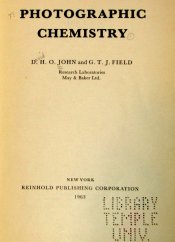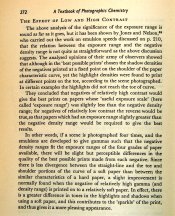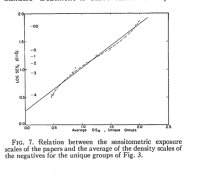David Lyga
Member
The notion that one should process a B&W negative such that when it is laid upon a newspaper the newsprint is still visible through the negative's highlights is a concept that I have never been comfortable with. My negatives are usually a bit harder, thus unable to succeed with that test.
I often wondered if there was, in fact, an ideal gamma (contrast index) to adhere to (assuming modification for condenser vs diffusion printing) and was always told that an amount somewhat less than '1' was ideal. However, through the years, I often wondered about that. And in pondering, I have also wondered why American authors on technical aspects of photography have usually been too terrified to NOT remain tethered to truisms, whereas the British authors seem to be the most comfortable with promulgating what they actually find through discovery, even if such discovery leads to inferences of iconoclasm within the comforts of the photographic community. Thankfully, those Brits do not care whose toes they step on, even if it is the toe of the characteristic curve. Sorry about my prejudices, folks, but I have read too many books by Brits, in and out of photography, to not state this positive divergence boldly. (Sorry, Greece, but without this 'confiscation', the Parthenon (Elgin) Marbles would not exist in the condition that they are in today.)
You will rarely find this pragmatic divergence from the status quo with American authors; instead, the mantra keeps getting repeated almost as 'duty'. No, really, not so even with Ansel Adams. Sorry, folks, but I have waited and patiently searched for years, perhaps decades, to find this truth in print. '"Photographic Chemistry" (1963) I found while looking through the photography books at Temple University's Paley Library. Tailoring a negative's contrast to a normal paper does not necessarily provide for the best print. Thank you Drs John and Field of (former) May & Baker Ltd for confirming what I have always felt in my heart.
In essence, a softer paper offers a more balanced, extended straight line within the characteristic curve so that the toe and shoulder areas do not become, suddenly, too crowded and tonally undifferentiated. That subtlety speaks volumes. The final paragraph from page 272 is the denouement.
And for those who will refute all this by warning about that excess grain from the excess gamma: save your efforts, as the softer paper handily mitigates this negative threat.
But, seriously, any comments, pro or con? - David Lyga
I often wondered if there was, in fact, an ideal gamma (contrast index) to adhere to (assuming modification for condenser vs diffusion printing) and was always told that an amount somewhat less than '1' was ideal. However, through the years, I often wondered about that. And in pondering, I have also wondered why American authors on technical aspects of photography have usually been too terrified to NOT remain tethered to truisms, whereas the British authors seem to be the most comfortable with promulgating what they actually find through discovery, even if such discovery leads to inferences of iconoclasm within the comforts of the photographic community. Thankfully, those Brits do not care whose toes they step on, even if it is the toe of the characteristic curve. Sorry about my prejudices, folks, but I have read too many books by Brits, in and out of photography, to not state this positive divergence boldly. (Sorry, Greece, but without this 'confiscation', the Parthenon (Elgin) Marbles would not exist in the condition that they are in today.)
You will rarely find this pragmatic divergence from the status quo with American authors; instead, the mantra keeps getting repeated almost as 'duty'. No, really, not so even with Ansel Adams. Sorry, folks, but I have waited and patiently searched for years, perhaps decades, to find this truth in print. '"Photographic Chemistry" (1963) I found while looking through the photography books at Temple University's Paley Library. Tailoring a negative's contrast to a normal paper does not necessarily provide for the best print. Thank you Drs John and Field of (former) May & Baker Ltd for confirming what I have always felt in my heart.
In essence, a softer paper offers a more balanced, extended straight line within the characteristic curve so that the toe and shoulder areas do not become, suddenly, too crowded and tonally undifferentiated. That subtlety speaks volumes. The final paragraph from page 272 is the denouement.
And for those who will refute all this by warning about that excess grain from the excess gamma: save your efforts, as the softer paper handily mitigates this negative threat.
But, seriously, any comments, pro or con? - David Lyga
Attachments
Last edited by a moderator:










 . Better expose print in darkroom for 20 minutes than have a thin, empty negative. But usually I always develop for grade 2 papers, because for years (until downfall of Fotokemika) I was using Emaks grade 2 double weight paper for 95% of my work.
. Better expose print in darkroom for 20 minutes than have a thin, empty negative. But usually I always develop for grade 2 papers, because for years (until downfall of Fotokemika) I was using Emaks grade 2 double weight paper for 95% of my work.



